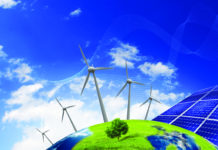
Statkraft has inked a contract with GE that will enable it to help keep the grid stable by providing inertia via a large spinning mass.
Power station turbines have traditionally helped keep the grid stable. As well as producing power, their spinning turbines provide a handy source of inertia to help keep system frequency in check.
But as old thermal plant comes off the system there is less inertia to go around. At the same time, increasing amounts of renewables mean more inertia is required – because in a low inertia system, the rate of change of frequency is faster. So relatively small deviations require rapid response or they can cause serious problems.
As National Grid ESO director Fintan Slye said last year, inertia has been “taken for granted” and the UK will need to quickly find new sources.
As such, the ESO in January awarded six year contracts worth £328m to Drax, Rassau Grid Services (Welsh Power), Statkraft, Triton and Uniper.
The long-term contracts mean companies can invest in the solutions required to provide inertia – and Statkraft’s project with GE is one of the most interesting.
The two will install two ‘Rotating Stabiliser synchronous machines’ at Statkraft’s site in Keith, Moray. Essentially big spinning wheels, their rotating mass means inertia is on tap – but without burning fossil fuels to generate it.
“The projects are powered by energy drawn from the grid. This energy flows through the grid connection which also delivers the stability services to the grid. The contract for that import power is not yet signed but we expect it to be a 100 per cent renewable energy supply contract,” explained a spokesperson for Statkraft’s Grid Stability team.
“More importantly, without the project, National Grid ESO would need to turn off renewables and turn up fossil fuel generation. In broad terms, importing 1MW of energy to power the project will enable an extra 100MW of renewable generation to run and save 100MW of fossil fuel generation and CO2.”
These kind of technologies, such as flywheels, batteries, potentially supercapacitors and alternative technologies capable of providing ‘synthetic inertia’, are set to become increasingly important as Grid aims to operate the system carbon-free whenever possible by 2025.
See details here.



